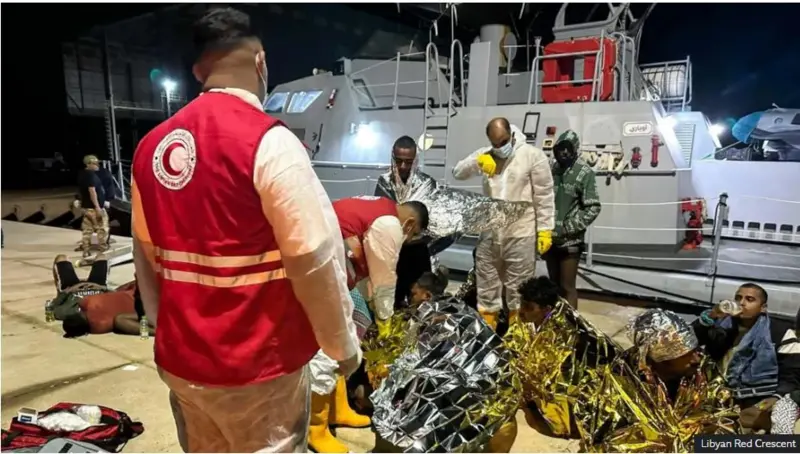At Least Four Dead as Migrant Boats Capsize Off Libyan Coast

TRIPOLI – At least four people have been confirmed dead after two overcrowded migrant boats capsized off the coast of Libya this past Saturday, according to humanitarian aid workers. The incidents, which involved nearly 100 individuals seeking passage to Europe, have once again cast a spotlight on the deadly Central Mediterranean migration route.
The Libyan Red Crescent Society confirmed the fatalities, stating that all four of the deceased were from a group of 26 Bangladeshi nationals aboard one of the vessels. The second boat, which was carrying approximately 70 migrants, predominantly from Sudan, also ran into distress and capsized.
The twin shipwrecks occurred as the vessels, laden with migrants, attempted to navigate the perilous journey from North Africa. Search and rescue operations are ongoing, but the full scale of the tragedy remains unclear. Humanitarian organizations on the ground have not yet confirmed if there are additional casualties from the second boat, which was carrying the larger group of Sudanese migrants.
The Central Mediterranean route, which connects North Africa to Italy, is widely recognized as the most dangerous migration path in the world. The International Organization for Migration (IOM) has repeatedly highlighted the extreme risks faced by those attempting the crossing in unseaworthy vessels, often operated by ruthless smuggling networks.
This latest incident adds to the grim statistics of the IOM's Missing Migrants Project, which has documented the deaths and disappearances of thousands of people along this route. The journey is undertaken by individuals fleeing conflict, poverty, and political instability in their home countries, with many from sub-Saharan Africa and parts of Asia viewing it as their only hope for safety and economic opportunity in Europe.
Despite ongoing efforts by international bodies and some European Union member states to bolster coast guard capabilities and disrupt smuggling rings, the flow of desperate people continues, and the death toll steadily rises. The situation is further complicated by the volatile political situation within Libya itself, where a lack of a unified government hampers consistent migration management and humanitarian response.
The capsizing of these two boats is not an isolated event but a recurring nightmare in the Central Mediterranean. It underscores the tragic human cost of a complex crisis that has defied simple solutions. While humanitarian groups provide critical front-line response, the repeated tragedies point to a desperate need for more robust, coordinated international policies that address the root causes of migration, provide safer legal pathways, and enhance search-and-rescue operations to prevent further loss of life on what remains the world's deadliest sea crossing for migrants.
